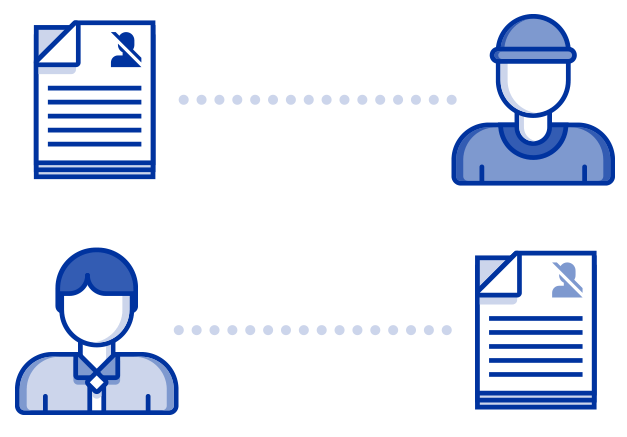As an online business owner, chargebacks are just part of your day-to-day life. But that doesn’t mean you have to accept them and move on. In fact, there are a lot of ways you can reduce chargebacks automatically, without having to respond to every single case by hand.
First, let’s talk more about how chargebacks work and are classified. Chargebacks are typically classified into two distinct types: friendly fraud and criminal fraud. Friendly fraud is usually just buyer’s remorse or forgetfulness. Sometimes, it’s denial— “there’s no way my husband was looking at those kinds of sites!” Either way, it’s not organized, and not always intended maliciously. A customer simply wants their money back, and they’ve taken measures with their bank to get it.
Criminal fraud, on the other hand, is the exact opposite. Someone wants to get something for free, or are after your money, and they are pursuing it in very creative, underhanded ways. They might even be sending a huge volume of transactions your way to collect a referral fee, then reversing all the transactions. They might even be competitors of yours trying to drive up your chargebacks, decrease your margins, and cut into your cash flow.
This isn’t paranoia — it’s the reality of running a high volume online business. You can either roll over, or you can fight back. Luckily, there are very effective ways to significantly reduce both types of chargebacks. You’ll never get to zero, but with the right combination of strategy and technology, you’ll be able to hold on to more of your hard-earned revenues.

The game here is to prevent criminal fraud before it happens, at the time of the order. You can significantly reduce your chargeback percentages by using the data provided at the time of purchase and automated scoring methods to prevent high-risk orders from being accepted. Here are some of the key data points you’ll want to look at for every transaction:
Transaction velocity: How many times has a similar fingerprint (name, location, credit card number, IP address, etc.) been used to attempt an order in the past 5 minutes? Past hour? Past 24 hours? Past week?
Transaction amount: How much was the transaction for? It’s not always the high-dollar transactions that are a higher risk for fraud.
Transaction attribute consistency: Was the order placed from an IP address in Hong Kong, but with a card issued in the United States and a shipping address in Africa? When something doesn’t look right, it usually isn’t — and looking for big inconsistencies like these is a great way to catch fraud before you fall prey to it.
Device fingerprints: Each computer and browser combination has its own unique fingerprint. Even if a fraudulent buyer manages to change or mask their IP address between transactions (through VPN services and advanced re-routing technologies), their device fingerprint will stay the same.
Why are device fingerprints important? It may be normal, depending on your product offerings, for a customer to make multiple purchases within a 7-day period — but it would be highly abnormal for the same device fingerprint to make purchases for 7 different customers within a 7-day period. Spot that, and you can stop fraud.
Bank identification numbers (BINs): Typically, this is the first six digits of a credit card account number. For example, 464018 is a Chase Rewards Visa Card issued in the United States. By knowing what the numbers mean, you can look for inconsistencies.
GeoIP: If the geo-location determined by the IP address of the user is significantly different from their shipping and billing information, you may want to pay closer attention.
Billing and shipping countries: Make sure these tell a similar, consistent story to the other data you have collected, like GeoIP and BIN.
Transaction response: Even after you approve an order, it’s not too late to void it. If the same card attempts another order a few minutes later and you receive a response back that the card is stolen, you should take action to void any previous charges and prevent any future ones. Also, make sure you are using AVS (address verification service) and CVV match checks (the 3 to 4 digit card verification value) for all your transactions.
Finally, consider the lead source: What campaign source, referral link, affiliate, or sub-affiliate did the order originate through? Do you notice any emerging or established trends with chargebacks and lead sources?
One of the most effective ways to automate criminal fraud prevention is through blocklists. Blocklists are created and maintained to add the transaction identifiers (credit card numbers, device ID’s, etc.) that are permanently barred from buying from you. When a customer attempts to make a purchase from you with an account number or fingerprint that has been flagged on your blocklist, the transaction is blocked from being sent to the payment gateway altogether.
Blocklist can be not permanent by setting up a TTL (Time to live) when configuring them. This is typically used to temporarily block weak attributes — like residential IP addresses, which change frequently. Permanently blocking a residential IP address could prevent legitimate orders, since the IP address could be reassigned to a new home in a matter of days or weeks. In instances like these, it might make more sense to implement a 7-day block against the transaction than a permanent one.
Catching and remediating friendly fraud can be a bit trickier. Occasionally, it’s the result of duplicate orders. That means looking for identical purchases that happen sequentially, and checking in with customers, can help prevent what may become a chargeback down the line.
Some businesses also notice a slightly higher propensity for friendly fraud amongst certain BINs, which may indicate that similar people with similar behaviors and preferences may be more likely to commit friendly fraud than others. There is often truth to this, but be careful about making sweeping assumptions. The goal is to prevent fraud, not commit discrimination.
So what can you do? The best, most proven way to reduce friendly fraud is to deliver so much value to your customer that they have no remorse. No remorse, no chargeback. Price competitively, deliver exceptional service, and sell superior products packed with value and quality, and you will enjoy significantly lower friendly fraud rates than competitors who overpromise and under deliver.
Outside of providing stellar value, you can also follow a standard set of business practices that can also make big dents in your friendly fraud chargeback rates:
Check the TC-40 reports. When Visa, Mastercard, American Express, Discover, and other major credit card brands (schemes) detect fraud, they report it in TC-40 reports. Often, these are large fraud rings that haven’t yet turned into chargebacks, but are expected to. Get ahead of it, before it costs you.
Be at the front line of customer service. As many as 80% of friendly fire chargebacks occur because the customer is too lazy to resolve the issue proactively with the merchant, or found it too difficult. Make it easy for customers to process returns and exchanges and resolve disputes — online and on the phone.

Answer the phone quickly, every time. Resolve every issue — even if it means a refund — before it becomes a chargeback. Use good inbound call center software and monitor your service levels and resolutions, and be vigilant about setting high customer service expectations. (You might wonder if you need phone customer support in 2018 and beyond — you do!)
Audit your customer experience. Pretend you are your own customer. Follow their journey — from encountering your advertising or affiliate campaigns, through to the shopping and buying process. Complete several purchases, and identify where you may have gaps that may underwhelm, confuse, or mislead the customer. Look for the sweet spot between conversion rate and clarity as you improve your processes and your messaging.
Take action on transaction response codes. A “stolen card” response code can mean either that your customer’s card was stolen, or that they were the thief. Don’t wait for a chargeback to find out which one. Reach out to customers about uncertain transactions before you fulfill them, to prevent unnecessary fees and penalties. Learn more about response codes and how to take action on them here.
Audit your cancelation and downgrade processes, too. How easily can customers cancel your service? If you make it hard to cancel, they’ll chargeback every time — and not just a single transaction, but often months of recurring subscription fees. Keep as much as you can by making it easy for them to choose a reduced-cost offering, or cancel altogether.
Chargebacks can add up over time — but these tips can help keep it under control. For more tips, download our Reducing Chargebacks and Fraud guide where we reveal the full cost of chargebacks and our top actionable tips to minimize your losses:
